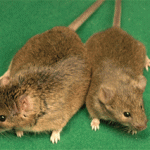03 Amazing Japanese cloning technology
Have you ever heard of the term somatic cell cloning?
Because it is a theme that is often featured in science fiction movies and novels, some people may feel it scary. Somatic cells are cells that mainly constitute our body. Somatic cell cloning is a technique to transfer a somatic cell nucleus into an egg, thus producing a cloned animal that is a copy of the donor (the individual who provided the original somatic cell). This is a relatively new reproductive engineering technology that was first reported in 1997 using sheep, but so far it has been reported to be successful in more than 15 animal species such as mice, cows, pigs, goats, dogs and cats. Somatic cell cloning technology is expected to be used in a wide range of fields such as medicine, basic biology, agriculture, industry, and environmental protection. In particular, the Bioresource Research Center is developing somatic cell cloning technology for stable propagation of infertile mouse strains and strains that are difficult to reproduce. Since mice have billions of somatic cells, in theory a myriad of clones can be created using this technique.
However, in fact, only one or two clones are born even if 100 eggs are transplanted into the mother’s womb. This low efficiency is a major barrier to spread somatic cell cloning technology. Researchers around the world are conducting research every day to break this barrier. Japanese researchers play a very important role in this research field.

Kimiko Inoue
